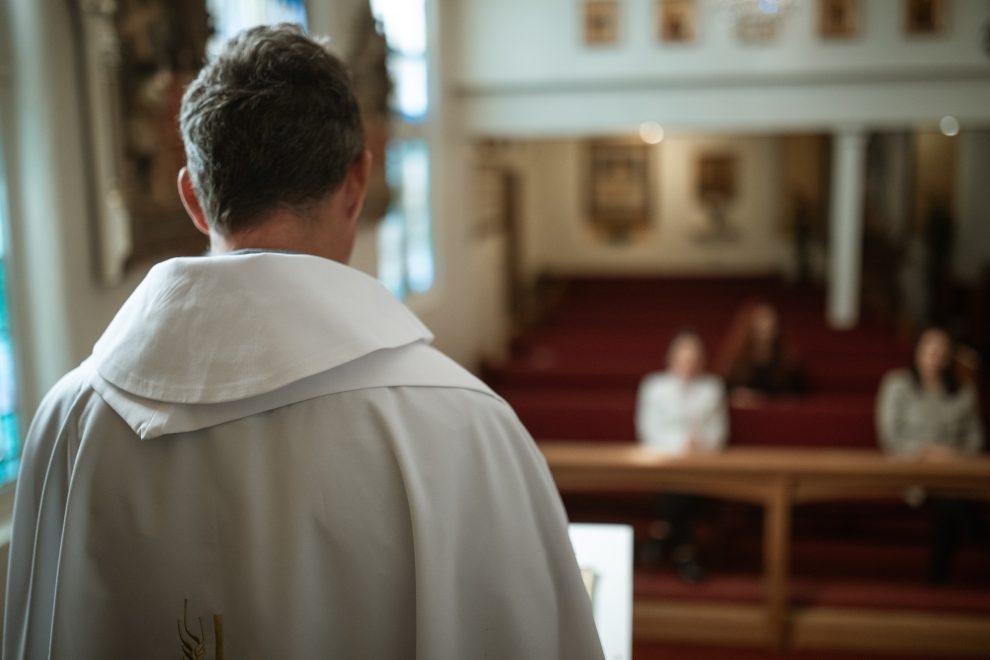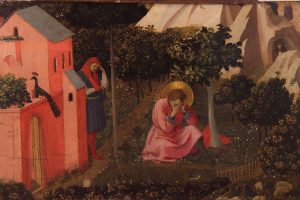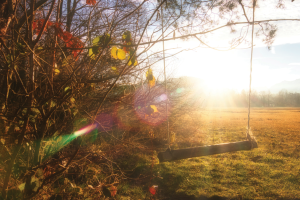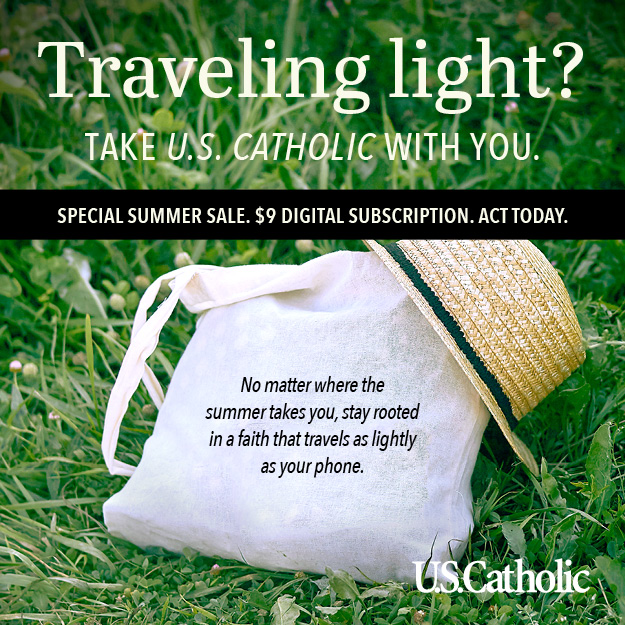Feeling called to religious life, many men and women are finding they first need to overcome a few obstacles in their path.
Finally, after years of shoving it down into the recesses of her subconscious, after hiding from it in college, Katie Press was ready to join a religious congregation. She’d earned a bachelor’s degree in religious studies and a Master of Divinity, and had already begun teaching at a school run by the Sisters of the Apostles of the Sacred Heart of Jesus. She knew that these sisters would be her community for the rest of her life.
But she couldn’t join them—not yet.
Press, like so many other Americans her age, had college debt. And the Apostles, like many other religious orders and congregations, couldn’t afford to absorb the debt of postulants. So, before becoming a sister, Press would have to pay off the cost of her education.
Today college debt is a ballooning obstacle for those discerning a vocation to religious life. The average college graduate leaves with $24,000 in educational debt, according to a 2009 study conducted by the Project on Student Debt.
“I would say at least half of the people I know who’ve entered religious life have some debt to work off,” Press says.
It’s a stark contrast to Catholics discerning a vocation 60 years ago, when the church saw a boom in the number of men and women answering a call to the priesthood and religious life. Many entered the seminary or a religious community in high school, which at the time meant that the diocese or religious order would pick up the cost for all subsequent years of education. Therefore education debt could explain, in part, why religious vocations in the United States have been on a drastic decline since 1965.
But school debt is only one of several obstacles younger Catholics who’ve already discerned a call to the priesthood and religious life are facing. Men pursuing the priesthood do so in the shadow of the sexual abuse scandal. Seminarians face more requirements than ever, including ongoing psychological examinations and several years of philosophy study.
And coming from families with fewer and fewer children, men and women pledging a life of celibacy often do so without the support and enthusiasm their parents—seeing the chances for grandchildren diminish—might have given them in the past, when large families were more common.
Numbers game
In 1965 the total number of religious priests, brothers, and sisters approached 215,000, compared to just more than 75,000 in 2010, according to the Center for Applied Research in the Apostolate (CARA). But Holy Cross Brother Paul Bednarczyk, executive director of the National Religious Vocations Conference (NRVC), says such numbers need to be seen in context.
“You can see that 30-year period is just a blip on the screen,” he says of the vocations boom. The 1950s and early ’60s aren’t representative of the whole history of religious vocations in the church. But they are figures many Catholics still remember and use as a point of reference.
“When you look at the history of religious life, there has always been a small number of Catholics who have responded to this call,” he says. “Today we are really reflecting the norm rather than the anomaly.”
In 2009 CARA published a report on recent vocations to religious life. The study, commissioned by the NRVC, found that U.S. religious institutes had an aging membership, diminishing numbers, and few, if any, new vocations. A small number of communities did experience significant growth and, in general, new vocations came from a variety of ethnic backgrounds.
But some 70 percent of those with recent vocations have at least a bachelor’s degree, Bednarczyk says, which often comes with student debt.
The Chicago-based NRVC received a $50,000 grant in April to study the impact of debt on religious vocations. “The anecdotal evidence would suggest this is a problem,” Bednarczyk says. “Years ago, it was common for people to enter religious life after high school, as I did. And so religious communities educated their postulants, their candidates, and their professed for ministry.”
Young Catholics could also start on the path to religious life or the priesthood much earlier. Minor seminaries and boarding schools that educated high-school aged boys interested in the priesthood were more common in the 1950s. Young men had the option to pursue the priesthood soon after they first considered it.
That’s not happening much anymore. The average age of a person entering religious life is 30, and the average age of diocesan and religious priests ordained in 2011 was 35. At these ages, many Americans have already started down completely different, sometimes lucrative career paths. To answer a call to religious life or priesthood, that career has to be left behind. And most people don’t want to do that.
Family matters
Bednarczyk also suggests the average size of a family could present an obstacle. “Years ago, when you had 10 children, you were thrilled when two went to the church. Now with one or two children … parents want to be grandparents,” he says. “The encouragement parents once gave their children to consider a religious vocation is not as prominent as it once was.”
Initially Dominican Brother Dominic David Maichrowicz, who is a couple of years away from being ordained a priest, didn’t feel much encouragement from his family. Instead, he found the support he needed through young Catholics he met at a Bible study.
“I reached a point when I said to God: ‘Anything you want me to do with my life, I will,’ ” says Maichrowicz. “Almost immediately I felt this very strong sense that he wanted me to be a priest. I wasn’t happy with that at all.”
He couldn’t deal with celibacy, he says, another obstacle faced by many men and women who’ve discerned a call to priesthood or religious life.
“I watched a lot of my friends get married; I watched them have children; I watched them struggle with dating or with their spouses,” says Conventual Franciscan Friar Nader Ata, who had been open to having many children. “I miss that sometimes. I have to mourn the fact that I’m not going to have children. I had to explain to Mom that I wasn’t going to have a child.”
Instead he looks to the future when he’ll be involved in important moments of a family’s life: baptism, weddings, funerals. But parents don’t always get that.
“Getting families to understand the vocation of the priesthood and the joy and happiness that comes with it isn’t easy,” says Rosemary C. Sullivan, executive director of the National Conference of Diocesan Vocations Directors.
“Parents won’t discuss things they don’t understand, which is an obstacle,” she says.
Dominican Brother Chris Brannan is an extreme, though not uncommon, example. He was received into the Catholic Church in 2004. His family remained evangelical Protestant. Their reaction to his conversion and entrance into religious life has complicated his discernment.
“It was much more difficult as I have entered religious life, in part, because it’s such a foreign thing to them,” Brannan says. He is the oldest of three, and there was a bit of a disappointment that he wouldn’t get married and have kids. His family also struggled to understand his vows of poverty and obedience.
“What’s all that mean?” Brannan recalls his family saying. “Are you going away and joining a cult and we’re not going to see you again?” That same fear and confusion might feel similar in Catholic families. Catholics don’t live in enclaves like they once did, so with fewer families and friends “giving a child to the church,” there’s less familiarity with what that might look like.
Quality, not quantity
For what it’s worth, the rate of decline seems to be slowing—slightly. From 1985 to 1995, the number of priests in the United States decreased by more than 8,000, whereas from 2000 to 2010, the number decreased by less than 7,000. CARA has also reported minor increases in the number of ordinations over the past several years.
But the number of priests in the United States dropped from more than 58,000 in 1965 to fewer than 40,000 in 2010. What exacerbates the decline is that the number of U.S. Catholics has increased by 20 million, from 45.6 to 65.6 million.
The relatively small increases in ordinations from year to year aren’t keeping up with the expanding Catholic population. For example, there was one priest for every 778 Catholics in 1965 compared to one priest for every 1,640 Catholics in 2010. But again, as Brother Paul Bednarczyk at the NRVC says, we’re comparing today’s numbers to an “anomaly” in the ’50s and early ’60s.
Still, Father Shawn McKnight, executive director of the U.S. bishops’ Committee on Clergy, Consecrated Life, and Vocations, believes priestly vocations have turned a corner. Ordinations bottomed out and are on their way back, he says, adding that simply increasing numbers isn’t the goal.
“As we’re looking at increasing the number of priests in this country because of the need, we’re also very concerned about quality and not letting someone through who shouldn’t be in the priesthood,” McKnight says. “I think that actually increases the likelihood that good men are going to enter into the seminary. They have confidence in the formation process.”
Seminarians now go through more rigorous formation than in years past. That’s due in part to Pope John Paul II’s 1992 apostolic exhortation Pastores dabo vobis, which, as McKnight explains, gives explicit concern to “human formation” in seminaries, as opposed to the traditional emphasis on the spiritual and academic.
“In the wake of the sexual abuse scandal, we don’t pray away our sexuality,” says Paulist Father Dat Tran, who was ordained in May. “Most people don’t think you can be a healthy celibate. You can be. We’re human beings, we have to be self-aware. The priests who thrive are the guys who are comfortable in their own skins. They’re authentic people.”
Discerning a call to the priesthood or religious life is now done in the wake of a sexual abuse crisis—another thing Catholics discerning their vocation in the 1950s didn’t have to deal with.
“The scandal has been a horrific part of our history, one that is continuing,” says Sullivan of the National Conference of Diocesan Vocations Directors. “But if you can find something positive in something so evil, then it’s that we’ve stopped being complacent.”
Before her current post at the NCDVD, Sullivan worked in the vocations office at the Diocese of Rockville Center, New York, one of the largest dioceses in the United States. She’d ask seminarians: “Why are you stepping up now, when you’re going to be under a microscope?”
“Time and time again, these men would say to me, ‘Because now God really needs me.’ ”
Bednarczyk says he hears similar reactions among those answering the call to religious life.
“Especially among the newer religious, they aren’t naive to the issues of the church or the crisis. But they want to make a wrong a right. There’s almost a determination that there’s been a black mark on the church and they want to improve the situation.”
The abuse crisis seems to have more impact on the all-important family-support component. Much of the vocations outreach today focuses on the family. There’s also a general emphasis on all vocations—to the religious life, the priesthood, single life, and marriage.
How many years?
Once in the seminary, priests-to-be face years of schooling—even if they’ve already earned college degrees.
Since the 2005 edition of the U.S. bishops’ Program for Priestly Formation, seminarians have been required to take a minimum of 30 credits in philosophy and have a minimum of two years of “pre-theology.”
“Getting through it, it was frustrating,” says Father Tran. “We were learning ancient philosophy, and I was like, ‘What are these guys talking about?’ ”
After his theological studies, though, Tran says the philosophy gave him a background to better understand theology.
“Holistic formation stretches you in so many ways,” he says. “You have to do all of these things at the same time—pastoral ministry, study, prayer, community life, keeping in touch with family. It makes seminary a challenge.”
Franciscan Friar Ata, who will profess his solemn vows this month, fulfilled his pastoral ministry requirement while living in Costa Rica. It’s common for seminarians to spend a year abroad, learning a different culture or language. Ata’s province even requires seminarians to learn Spanish.
Such schooling requires commitment, something Ata believes is more difficult to have in contemporary culture. While priests and religious had to make lifelong commitments in the 1950s, their culture wasn’t marked by the same desire for instant gratification.
Ata says our society carries the Internet in its pocket. Whatever you want is as close as the nearest web connection. This is in stark contrast to the time it takes to complete seminary. Doctors and lawyers go to school as long as some priests do, but there’s a lot more money at the end of a lawyer’s education, Ata says. And if a doctor wants to change careers, she doesn’t need approval from the Vatican.
Meanwhile, a culture in which we expect a world of choices at our fingertips does not lend itself to the focused spiritual life of someone entering religious life.
“If you’re not real astute to listening to the voice within, it may be hard to hear the call,” says Mercy Sister Mary Joanna Ruhland, associate director of the U.S. bishops’ vocations office. “The things we enjoy, which may be very good, can prevent us from really giving time to the spiritual life if they aren’t used in the right way.”
“It’s not easy,” Ata says, echoing her sentiments. “We like to be comfortable.”
Turning the tide?
“You know how it takes a village to raise a child? It takes the church to raise a vocation,” the NRVC’s Bednarczyk says. “The future of religious life isn’t dependent on the religious themselves; it’s an issue for the entire church.”
Much of the church infrastructure—parochial schools, Catholic colleges, universities, hospitals—was built on the backs of the religious. Promoting religious life benefits the entire community.
“If we’re truly serious about helping our young people grow deeper in the church and become vibrant members, we need to help them in their discernment of what God is calling them to be,” says McKnight from the USCCB.
The idea is that making God a part of all discernment will engender a culture of vocations, where the thought isn’t, “What do I want to get out of life?” but instead, “What is God calling me to be?” The church is focusing on this more and more often in youth ministry.
“I think that [a religious calling] is something a lot of young people sort of stumble into rather than see as a real option,” says Dominican Brother Dominic David. “They often have to discover it the hard way. In a certain sense, until that’s corrected, there’s going to be a sort of crisis of vocations. But it’s something we see a lot of hope for. We see that turnaround happening.”
David overcame his family’s initial hesitance. Father Tran managed to juggle the many responsibilities of formation in seminary. Press took donations, worked three jobs, and paid off her college debt. They’re overcoming the obstacles by accepting help from others.
“It was nothing short of a miracle,” Press says of paying off her debt in six months. “It helped me experience the mercy and generosity of God more than any other singular event in my life—through the sheer kindness of people. Why would they want to give me money, someone they’ve never met before?”
But Press also sees a major difference with how the church approaches vocations now compared with the ’50s.
“The church as a whole is changing how it understands vocations, how we express them, and how we look at them,” Press says. “It’s a universal call to holiness. Being a Catholic schoolteacher, married with children, is equally as valid as being a religious sister and teaching at the same Catholic school. It’s not like one is better than the other.”
This article appeared in the September 2011 issue of U.S. Catholic (Vol. 76, No. 9, pages 30-35).
Image: RODNAE Productions from Pexels














Add comment